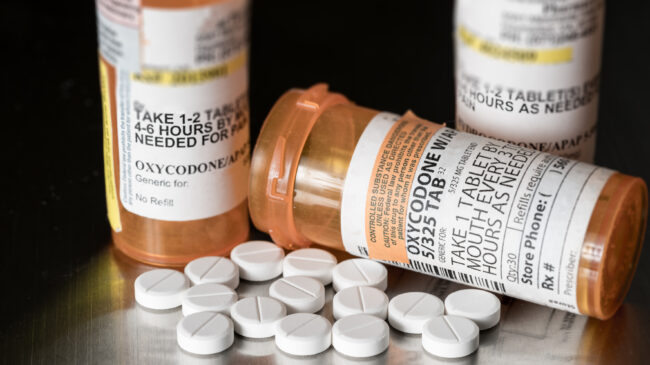After fighting over 3,000 cities, counties, states, and other plaintiff’s allegations against the company, Purdue Pharma, the maker of OxyContin, recently pled guilty to three criminal charges related to the opioid crisis. The Associated Press reported:
Drugmaker Purdue Pharma, the company behind the powerful prescription painkiller OxyContin that experts say helped touch off an opioid epidemic, will plead guilty to federal criminal charges as part of a settlement of more than $8 billion, the Justice Department announced Wednesday.
The deal does not release any of the company’s executives or owners — members of the wealthy Sackler family — from criminal liability, and a criminal investigation is ongoing. Family members said they acted “ethically and lawfully,” but some state attorneys general said the agreement fails to hold the Sacklers accountable.
The company will plead guilty to three counts, including conspiracy to defraud the United States and violating federal anti-kickback laws, the officials said, and the agreement will be detailed in a bankruptcy court filing in federal court.
It’s easy to place all the blame on Purdue and other profit-motivated companies for the plight of opioid-afflicted communities, but that sort of surface-level examination by policymakers is part of the reason we have an overdose crisis. The most recent increase in opioid-related deaths has less to do with the number of OxyContin prescriptions and much more to do with drug users resorting to dangerous drugs sold by the black market after the government’s crackdowns on prescription drugs.
One of the main accusations against Purdue is that its marketing campaign underplayed the dangers of its opioid OxyContin and the risks of addiction for susceptible patients. But according to the U.S. Substance Abuse and Mental Health Services Administration, non-medical use of opioid pain relievers remained stable during the period of increased opioid prescribing between 2002 and 2012. Following coordinated interventions across the country, the misuse of pain relievers did slightly decrease after 2012, but substitution to a black-market alternative, heroin, also increased in tandem.
Despite seeing record rates of opioid-related deaths recently, opioid addiction rates have actually dropped 33 percent since 2015. This trend seems to be consistent with most drugs. Cocaine addiction has dropped 33 percent since 2002, but cocaine-related deaths almost tripled over the same period. In fact, the data show that addiction rates for all substances tend to be unrelated to death rates.
Research shows that the increase in opioid-related deaths can sadly be attributed to the fact that people are using drugs, just as often as they always have, but the drug supply is more dangerous due to significant reductions in prescribing since 2012. The Centers for Disease Control and Prevention have even pointed to the fact that most of the recent opioid deaths have been caused by illegal opioids trafficked from China. As Jacob Sullum pointed out in Reason in October:
The perverse effect of restricting access to prescription opioids should not have been surprising, since the crackdown on pain pills pushed nonmedical users toward black-market substitutes that are far more dangerous because their potency is highly variable and unpredictable.
…Illegally produced drugs now account for the vast majority of opioid-related deaths. In 2018, according to the National Center for Health Statistics, the category of drugs that includes fentanyl and its analogs was involved in more than two-thirds of those deaths, while heroin was detected a third of the time. Prescription opioids like hydrocodone and oxycodone turned up in 27 percent of the cases, and many of those deaths also involved fentanyl or heroin.
Unfortunately, there’s too much scapegoating and money on the line for these facts to get in the way of the government’s crusade. For example, Mike Moore, the former attorney general of Mississippi who previously sued Big Tobacco companies for $246 billion, is now leading an effort in Cleveland, Ohio, to liquidate Purdue. He claims the pharmaceutical company falsely advertised to doctors that “if you prescribe your patients [OxyContin], there’s less than one percent chance they’ll get addicted. That was a lie, a big lie.”
But Moore’s claim is incorrect. When Purdue first introduced OxyContin in 1995, the one percent addiction rate that it advertised was conservative and studies show the chance of addiction is even less. In fact, despite opioid deaths that now number in the tens of thousands each year, there has only been one opioid overdose death for every 8,000 opioid prescriptions distributed since 2006.
Moore also claims “the Food and Drug Administration was asleep at the wheel while all this was happening.” That’s false, too. The FDA has actively addressed the concerns about OxyContin, fining Purdue $600 million in 2007 for misbranding and even encouraging the abuse-deterrent OxyContin reformulation in 2013. Unfortunately, it’s well-established that the government-mandated reformulation actually led to more heroin use and opioid overdoses.
Despite shaky accusations, Moore’s coalition of cases has added other pharmaceutical companies to the defendant list, which helps maximize the settlement amount possibilities. Four other companies have already settled for $260 million in Cleveland alone, and Moore is now pursuing hundreds of billions of dollars from the likes of Johnson & Johnson, CVS, and over 600 other defendants.
Individual states have also pursued their own cases but, unfortunately, their accusations tend to be equally littered with misinformation. In Florida, former Attorney General Pam Bondi filed a case against pharmacies that claimed CVS and Walgreens made “unconscionable efforts to increase the demand and supply of opioids into Florida” that “caused 5,725 deaths in Florida in 2016.” But neither company ever advertised their opioids—and there were actually 2,798 opioid deaths in Florida in 2016. Unfortunately, these types of inaccuracies aren’t limited to Florida, with others also frequently overstating their opioid death rates.
However, the precedent for these opioid-related cases shows massive settlements are possible, regardless of the accuracy of claims. During the one state-level case that went to trial, Oklahoma Attorney General Mike Hunter presented the following accusations:
“There are more prescription drug overdose deaths each year in Oklahoma than overdose deaths from alcohol and illegal drugs combined. Oklahoma leads the nation in non-medical use of opioid painkillers. And, in 2016, Oklahoma ranked number one in the nation in milligrams of opioids distributed … per adult.”
Every claim in Hunter’s statement was wrong but that didn’t stop him from getting a judge to rule Johnson & Johnson had to pay $572 million for Oklahoma’s opioid crisis. In contrast to Hunter’s claims, in 2016 deaths from illegal stimulants like cocaine and methamphetamine alone surpassed deaths from opioid painkiller prescriptions in Oklahoma. Likewise, contrary to his claims, alcohol-induced deaths, though not all technically overdoses by definition, nearly doubled prescription opioid deaths that same year. And Oklahoma was neither the leader in painkiller misuse nor opioid distribution per adult. It’s certainly clear that too many people were dying from opioids in Oklahoma, but Hunter’s blatant inaccuracies should’ve undermined his authority to assess damages.
It is clear that the government’s over-regulation of pharmaceutical products has been followed by more death. In this case, government policies have forced or encouraged pain patients to turn to more dangerous drugs, including heroin and fentanyl. But while it continues to target drugmakers, pharmacies, and others, do not expect the government to be held responsible for its own role in pushing prescription drug users to more dangerous drugs.

